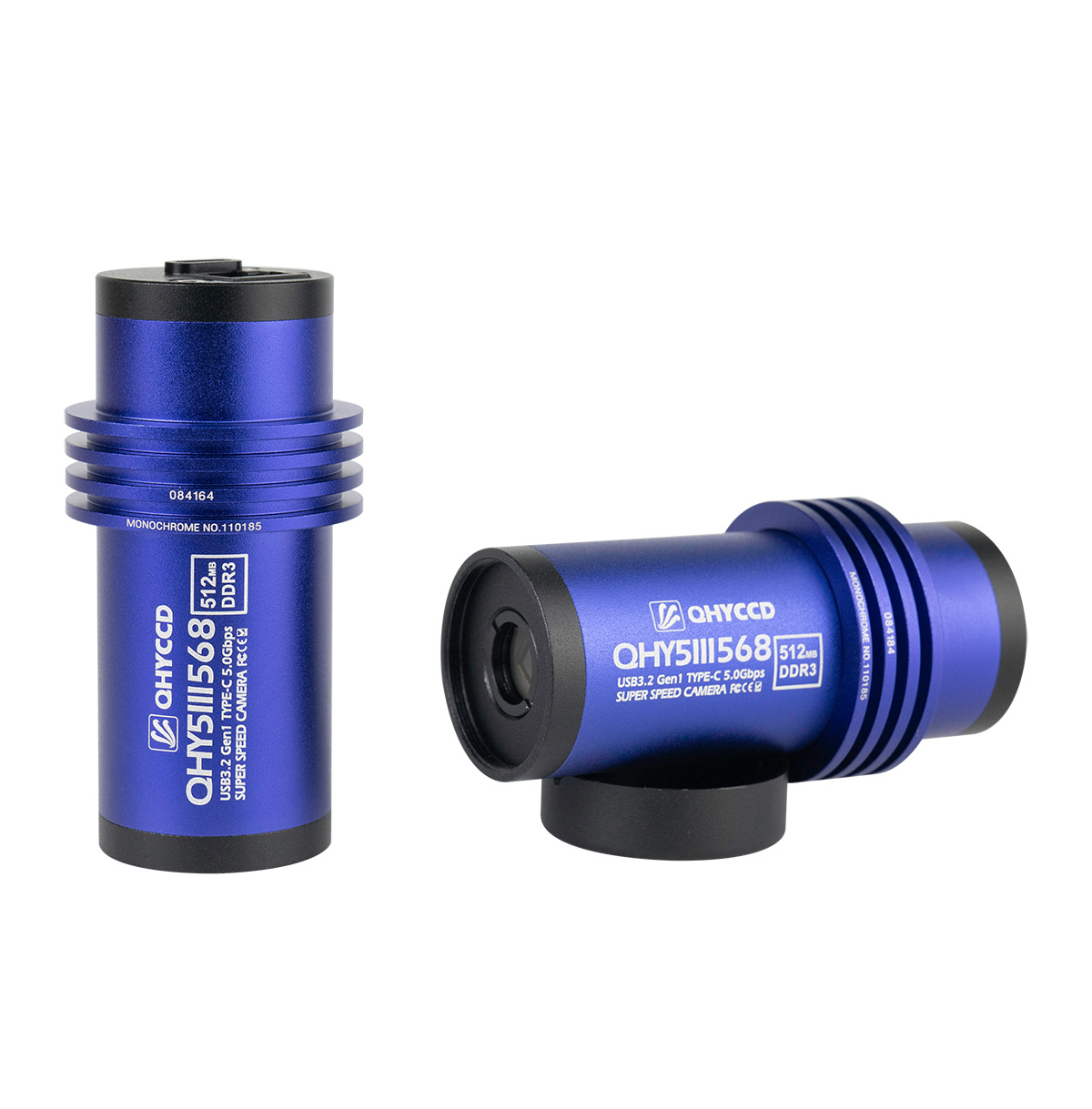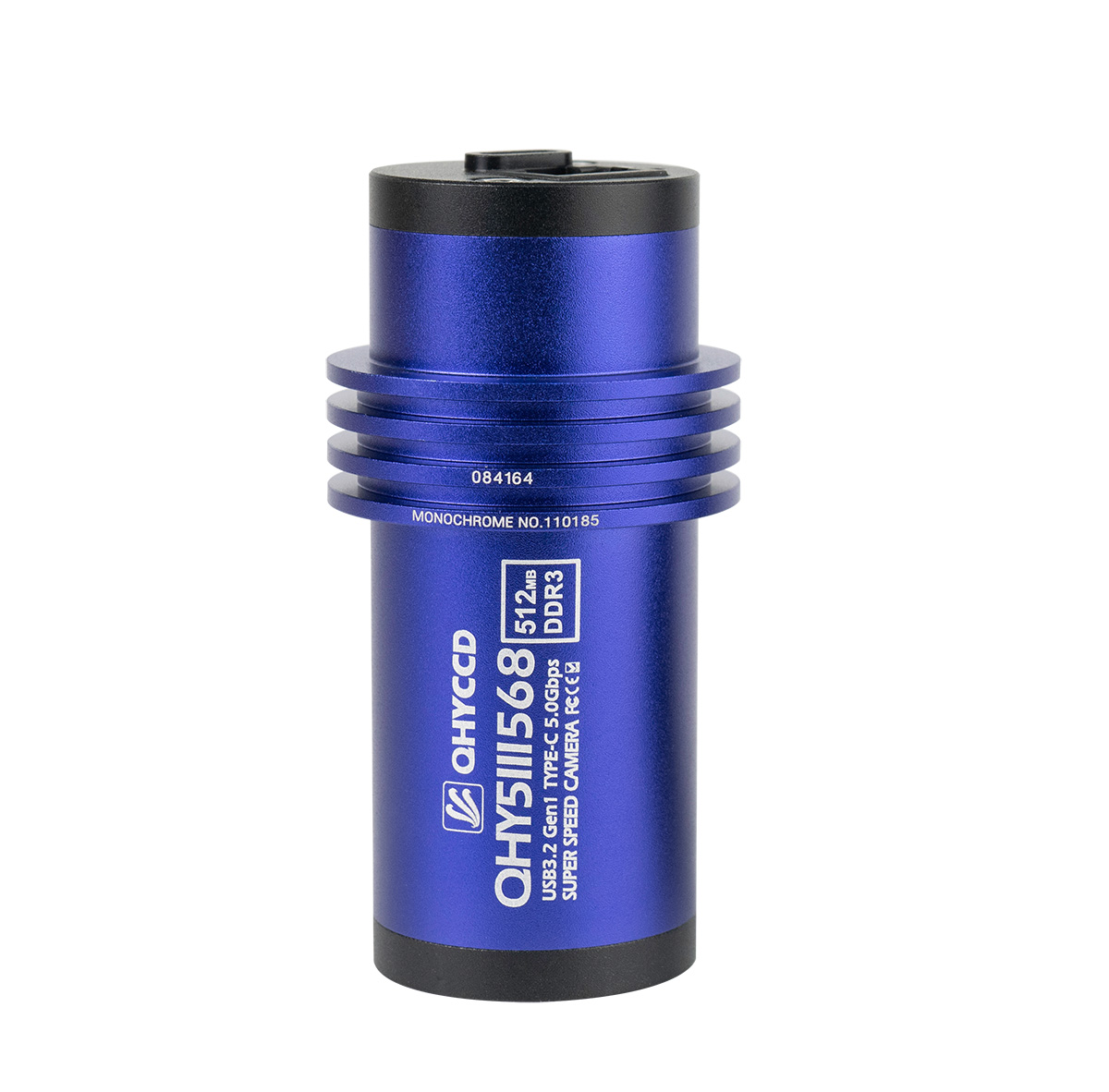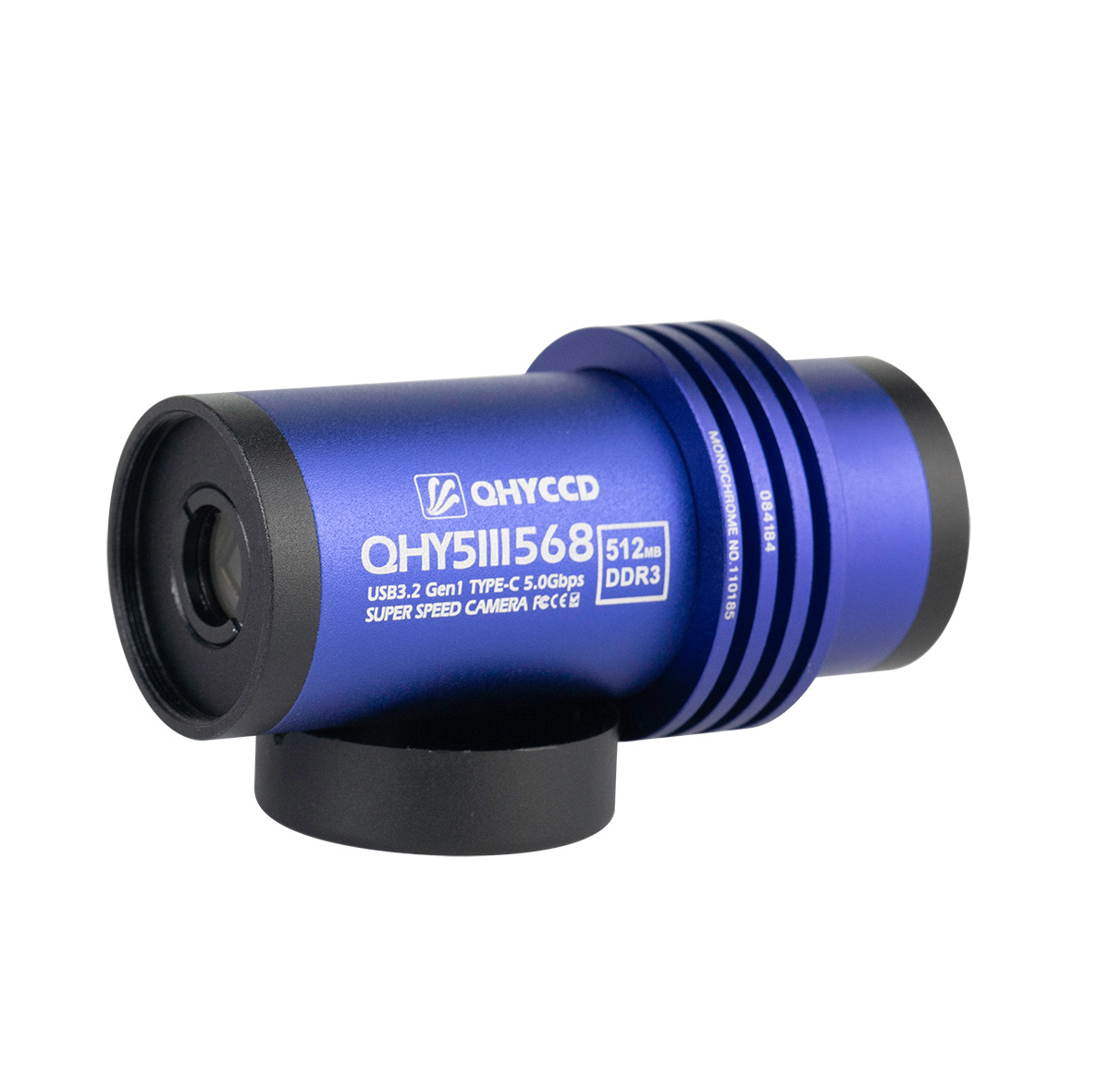The QHY5III568M/C is a back-illuminated planetary and guiding camera built on the Series 5III v2 framework It utilizes a global shutter and supports true hardware 2×2 binning. Its high-speed design can output up to 500 FPS at select ROI.
• Mono or Color
• 5.1 Megapixels
• Back Illuminated
• On-chip 2×2 binning
• Global Shutter
• High Frame Rates
• 512MB DDR3 Image Buffer
• New 5III v2 Series Platform
Sensor
The QHY5III568M/C uses a 5.1-megapixel Sony IMX568 Pregius S CMOS sensor with 2472 x 2064 pixels at 2.74um. Pregius is Sony’s trademark name for its global shutter pixel technology for active pixel CMOS image sensors that combine the low-noise performance of CCD with the high-speed and high-precision performance of global shutters.
The newly developed Pregius S technology adopts a back-illuminated structure to simultaneously realize a smaller image sensor and a faster frame rate, while still maintaining the high imaging performance of Pregius.
Back-Illumination
One benefit of the back-illuminated CMOS structure isimproved sensitivity. On Pregius S, Sony newly developed an original photodiode structure and light-shielding structure that were optimized for the back-illuminated structure. These greatly improved the sensitivity and saturation properties while also suppressing the noise generation. By utilizing these properties, it is also possible to maintain the image quality while achieving the miniaturization of pixels, which makes a more compact image sensor possible.
True Hardware Binning
Unlike Most CMOS cameras, the QHY5III568M/C camera supports charge-domain binning (FD Binning), which is true hardware pixel binning similar to CCD cameras. In the past, most CMOS cameras used digital binning, which relied on algorithms for binning after the readout process. The disadvantage of this binning method (using 2*2 binning as an example) is that while the signal is amplified by 4 times, it also introduces twice the amount of noise, resulting in only a doubling of the signal-to-noise ratio, and the frame rate is not improved. In contrast, hardware binning does not increase the noise, resulting in a direct 4-fold improvement in the signal-to-noise ratio. Moreover, the frame rate is significantly increased without reducing the field of view by selecting a smaller region of interest (ROI) on the sensor.
[NOTE: When the colour camera is binned 2×2 it produces a monochrome image]
Global Shutter
Both the mono and colour versions of the QHY5iII568M/C have a global shutter. Unlike the rolling shutter technology used in most CMOS cameras, a global shutter begins and ends the exposure for all pixels in the array at the same time, guaranteeing uniform exposure over the entire image. In the Pregius global shutter design, the pixel comprises a photodiode with the excellent low-noise property of CCD and a memory section. The light simultaneously sensed by each photodiode of all pixels is converted to digital signal and transferred to their respective memory sections before being processed. By processing the simultaneous digital signals all at once, the resulting image has no distortion. This type of shutter is ideal for high precision applications and is superior to the rolling shutter when imaging moving objects.
High Frame Rates
High-speed signal processing and high image quality are additional advantages of the sensor design in the QHY5III568M/C. The key to the high speed of CMOS image sensors with Pregius technology is the parallel processing. CMOS image sensors are equipped with A/D conversion circuits, which transform the analogue signal from the pixel to a digital signal. An array of several thousands of these circuits arranged horizontally realizes the high-speed processing by operating simultaneously. In the A/D conversion circuit, the analogue circuit that causes noise has been changed to a different configuration so that it automatically suppresses noise. In this way, the technology both realizes the high speed and low noise in one image sensor.
Features common to the new QHY5III v2 Series cameras
QHYCCD’s latest planetary cameras and guiders are built around a new framework supporting a variety of sensors in the same small camera mechanical configuration. These features common to the new cameras, including the QHY5III568M/C are highlighted below:
512MB DDR3

The latest 5III (v.2) series of planetary and guiding cameras are all equipped with a 512MB DDR3 image buffer that can effectively reduce the pressure on computer transmission, a great help for planetary photography that often requires writing a large amount of data in a short period of time. Some deep-sky astrophotography cameras on the market today only have 256MB, for example. In comparison, the 512MB DDR3 memory of the new 5III (V. 2) series of cameras represents a significant upgrade.
New Front-end Design with Better Compatibility

QHY5III (v. 2) series cameras adopt a new front-end design with better compatibility and flexibility. The back focal length of the camera is only 8mm, which means you can easily use a v2 series camera with your OAG. The standard front end adapter has 1.25-inch threads so you can add a common 1.25-inch filter.
The front adapter window can also easily be switched. One of the advantages of changeable front window glass is you can add a filter even you’re using a lens. You can also add a 1.25-inch CS adapter to connect a CS lens, or a second CS-to-C adapter ring for a C-mount lens. The CS and C adapters are standard accessories.
QHY also offers an optional 1.25-inch filter wheel adapter available for connecting your mono planetary camera to a QHYCFW3-S filter wheel.
New rear design
Universal ST4 Guiding Interface


The custom guiding cable port of previous generations of planetary cameras and guiders has been replaced in the QHY5III (Ver.2)series with a more universal ST-4 compatible guiding port and commonly available cable with RJ11 style connectors. Now, even if the guiding cable is lost or damaged, you will be able to easily get a replacement locally at a low cost.
Indicator LED

The new QHY5III (Ver.2) series of cameras are equipped with a status indicator at the back of the camera. If the camera experiences an abnormal status, the multi-colored indicator light will help to determine the situation with different colors signifying different conditions. During normal operation this indicator light is off, so there is no worry about light contaminating the image.











Reviews
There are no reviews yet.